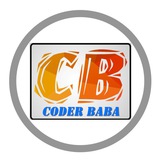What Are Web Services?
Web services are client and server applications that communicate over the World Wide Web’s (WWW) HyperText Transfer Protocol (HTTP). As described by the World Wide Web Consortium (W3C), web services provide a standard means of interoperating between software applications running on a variety of platforms and frameworks. Web services are characterized by their great interoperability and extensibility, as well as their machine-processable descriptions, thanks to the use of XML. Web services can be combined in a loosely coupled way to achieve complex operations. Programs providing simple services can interact with each other to deliver sophisticated added-value services.
Web services are client and server applications that communicate over the World Wide Web’s (WWW) HyperText Transfer Protocol (HTTP). As described by the World Wide Web Consortium (W3C), web services provide a standard means of interoperating between software applications running on a variety of platforms and frameworks. Web services are characterized by their great interoperability and extensibility, as well as their machine-processable descriptions, thanks to the use of XML. Web services can be combined in a loosely coupled way to achieve complex operations. Programs providing simple services can interact with each other to deliver sophisticated added-value services.
Deciding Which Type of Web Service to Use
Basically, you would want to use RESTful web services for integration over the web and use big web services in enterprise application integration scenarios that have advanced quality of service (QoS) requirements.
• JAX-WS: addresses advanced QoS requirements commonly occurring in enterprise computing. When compared to JAX-RS, JAX-WS makes it easier to support the WS-* set of protocols, which provide standards for security and reliability, among other things, and interoperate with other WS-* conforming clients and servers.
• JAX-RS: makes it easier to write web applications that apply some or all of the constraints of the REST style to induce desirable properties in the application, such as loose coupling (evolving the server is easier without breaking existing clients), scalability (start small and grow), and architectural simplicity (use off-the-shelf components, such as proxies or HTTP routers). You would choose to use JAX-RS for your web application because it is easier for many types of clients to consume RESTful web services while enabling the server side to evolve and scale. Clients can choose to consume some or all aspects of the service and mash it up with other web-based services.
Basically, you would want to use RESTful web services for integration over the web and use big web services in enterprise application integration scenarios that have advanced quality of service (QoS) requirements.
• JAX-WS: addresses advanced QoS requirements commonly occurring in enterprise computing. When compared to JAX-RS, JAX-WS makes it easier to support the WS-* set of protocols, which provide standards for security and reliability, among other things, and interoperate with other WS-* conforming clients and servers.
• JAX-RS: makes it easier to write web applications that apply some or all of the constraints of the REST style to induce desirable properties in the application, such as loose coupling (evolving the server is easier without breaking existing clients), scalability (start small and grow), and architectural simplicity (use off-the-shelf components, such as proxies or HTTP routers). You would choose to use JAX-RS for your web application because it is easier for many types of clients to consume RESTful web services while enabling the server side to evolve and scale. Clients can choose to consume some or all aspects of the service and mash it up with other web-based services.
CDATA - (Unparsed) Character Data.docx
11.6 KB
what is CDATA - (Unparsed) Character Data
Capegemini .docx
549.1 KB
Capegemini Interview math and reasoning question and answer
